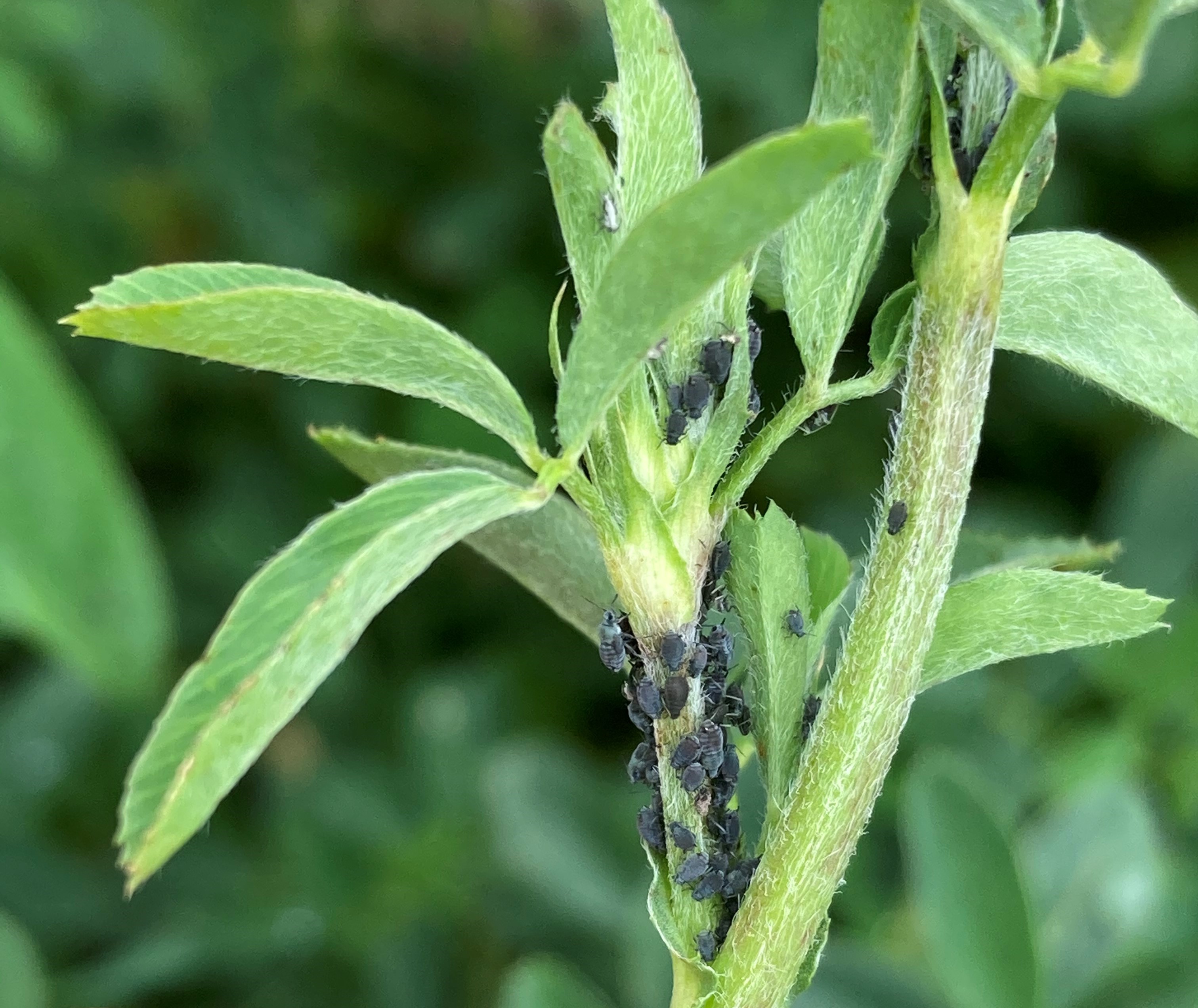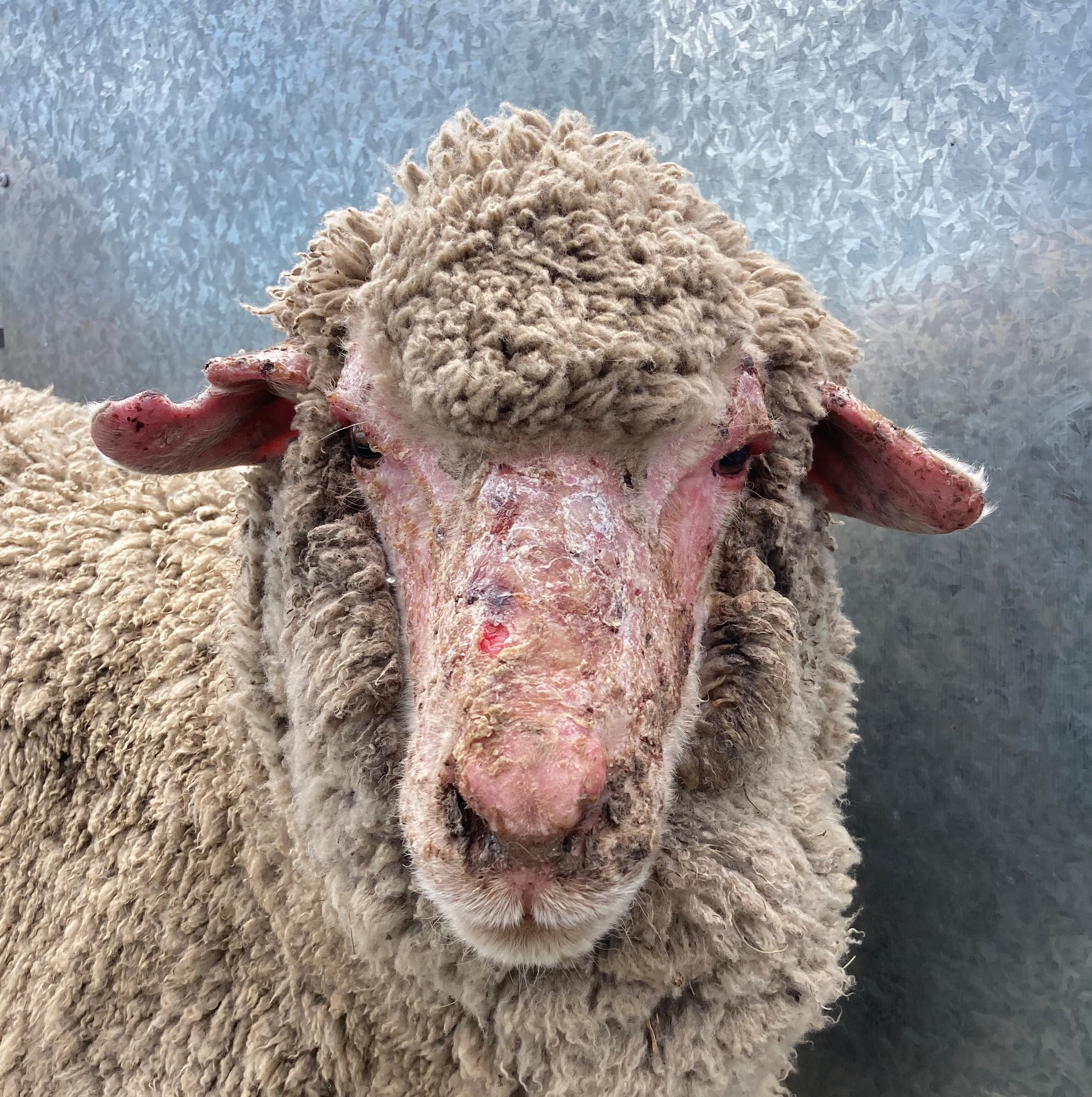South East Local Land Services Senior Agriculture Advisor, Jo Powells, is reminding producers on the Monaro that they should be keeping an eye out for new populations of cowpea aphids this spring.
Key Points:
- Lambs and lambing ewes on lucerne pasture are especially at risk from photosensitisation caused by cowpea aphids
- Livestock experiencing photosensitisation should be removed from the pasture and provided with shelter as soon as possible
- Producers should start monitoring lucerne pastures now and think about alternate feed plans.
"We have commenced a monitoring program across the Monaro this year to try and provide some early warning to producers as to the arrival of the aphids and any built up of aphid populations" Jo said.
"The frosts should be keeping any small outbreaks under control during winter but as conditions warm up as we head into spring, we are expecting to see an increase in aphid activity"
"Producers, especially those who have lambing ewes on lucerne pastures, really need to be checking their pastures regularly for these aphids.
"Cowpea aphids are matt grey to black in colour depending on their age, but all have distinct black and white leg markings."


Cowpea aphids were first sighted on lucerne pastures on the Monaro in August and September last year and resulted in significant animal welfare and production impacts for affected producers.
"It really was unpleasant to see stock suffering from photosensitisation, some had to be euthanised, others required ongoing veterinary treatment and pain relief, lambing numbers were down in affected mobs.
We are also seeing some long-term effects on wool production in mobs of affected animals well after they have recovered."
"Reports from other areas elsewhere in Australia that have experienced a new infestation is that the aphids remain present for a number of years, so producers really need to be planning for them to be a yearly occurrence while conditions allow for them."
It's believed that cowpea aphids contain a photodynamic pigment that can cause phototoxic effects in stock that are exposed to them in paddocks that contain lucerne and other Medicago host species. Producers reported seeing stock showing inflammation and scabbing around the eyes, ears, muzzles and udders consistent with photosensitisation.
"The quickest way to safeguard stock is to remove them from affected pastures early and provide shelter however, this isn't always possible or easy to manage for producers especially coming out of winter when available feed can be limited." Jo said.
"Producers need to be monitoring for the aphids through August and September planning through their management options if they are likely to be affected".
Producers who have questions or concerns about what their alternative management options may be are encouraged to talk to their agronomist or to contact Local Land Services.






